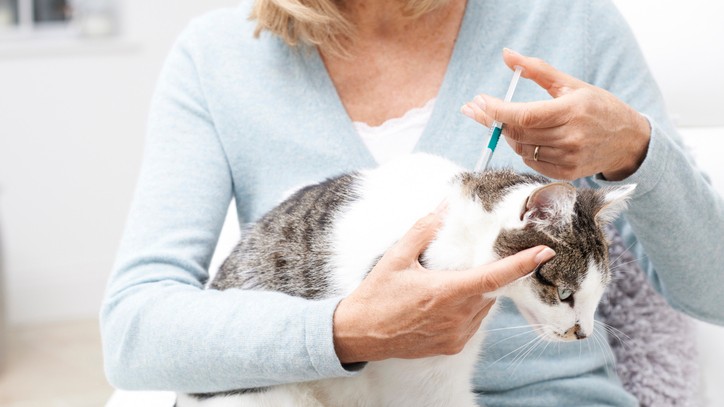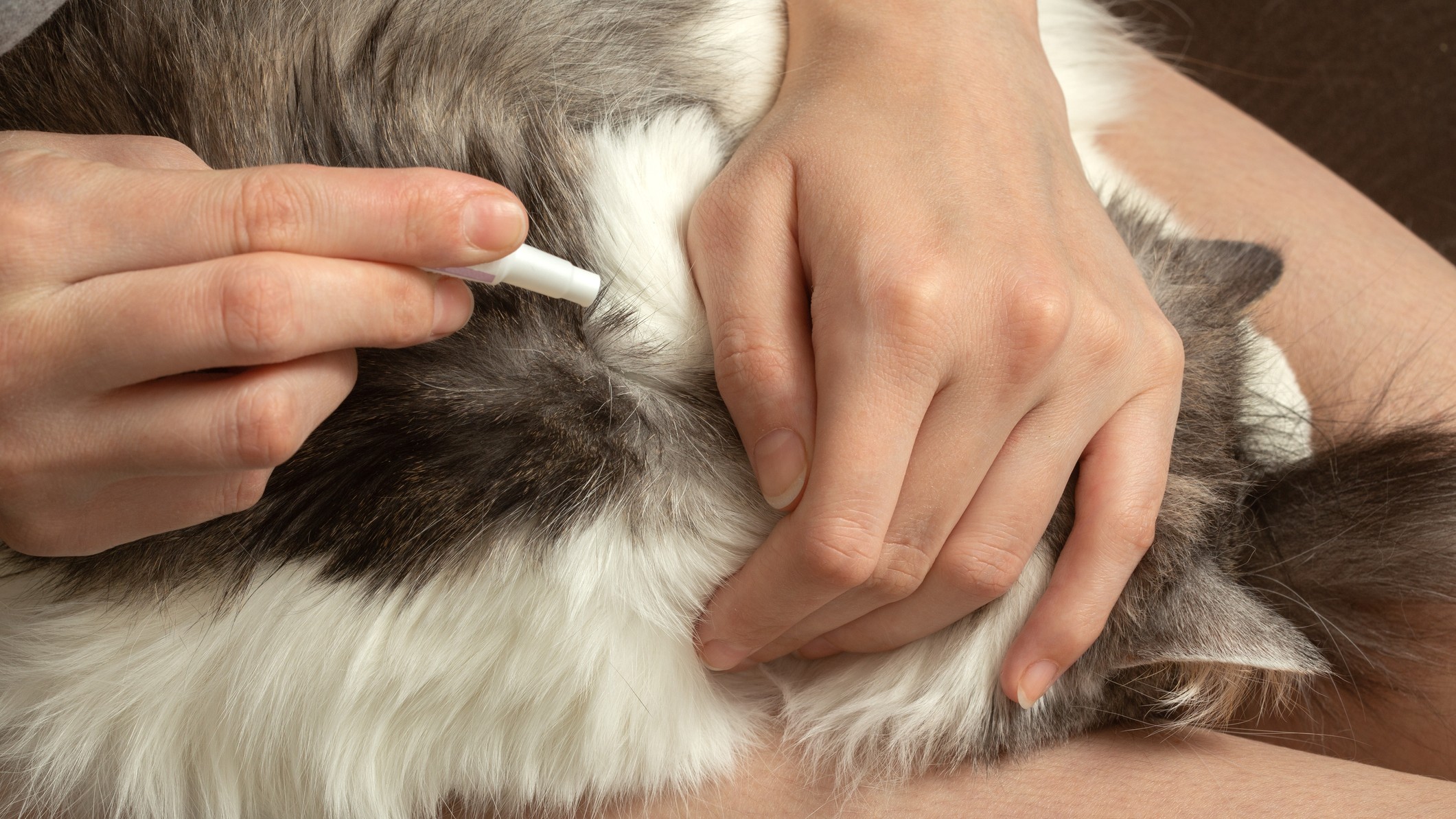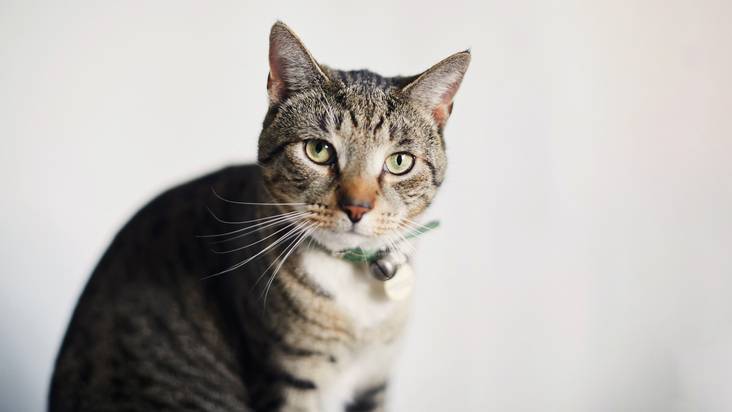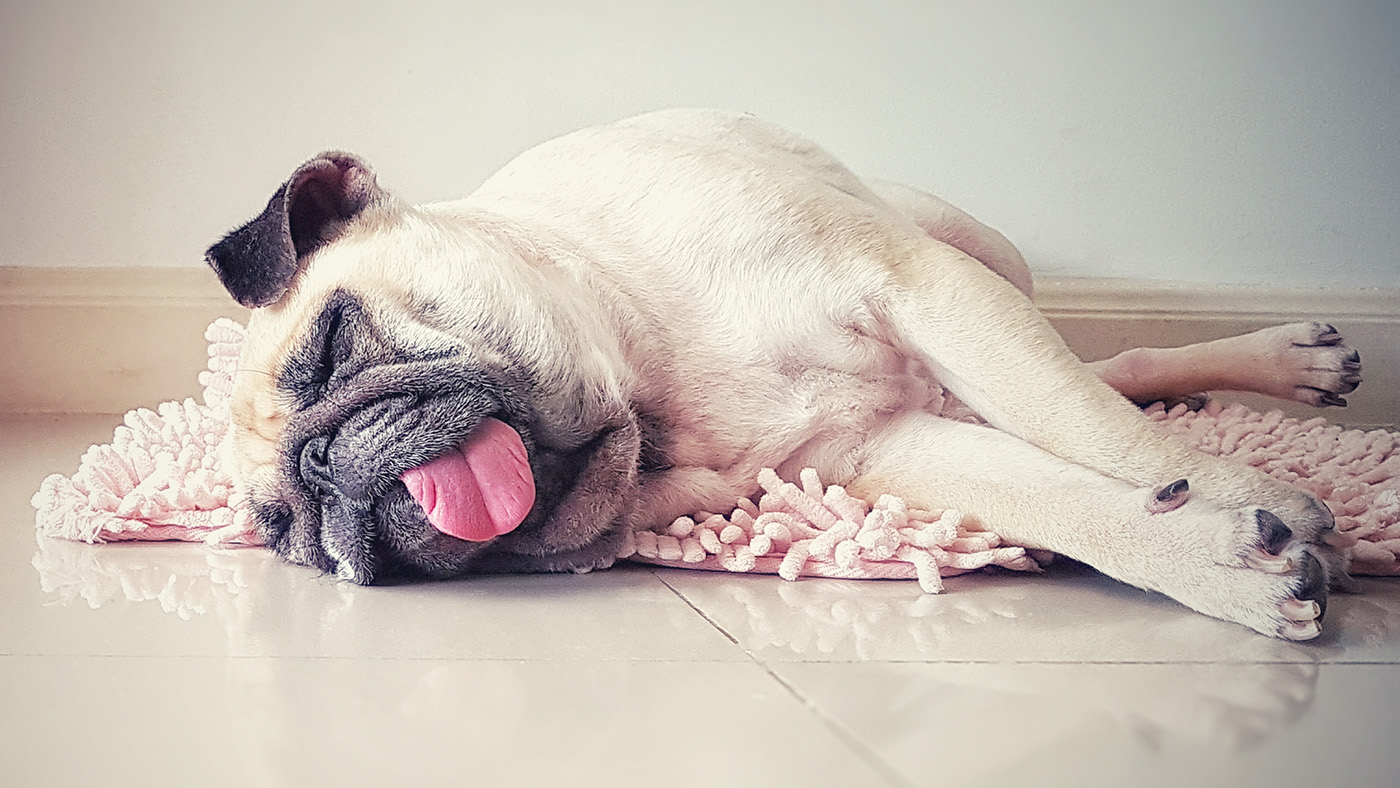The safest flea treatment for cats: A vet's view
Looking for the safest flea treatment for cats? Read this article to help you decide.

A women applies flea tratment
(Image credit: Getty Images)It’s common to worry about drug side effects when it comes to your pet, and you've likely found yourself wondering what the safest flea treatment for cats is. The problem is, that’s not an easy question to answer. The best flea treatments for cats vary – they’re made of different drugs, at different concentrations, and used in different ways. This makes it hard to directly compare them and choose one that’s better than the others. In addition, some drugs will be riskier or safer for individual cats. For instance, if a cat has a particular underlying condition, is a certain age, or is pregnant.
Of course, when in doubt, it’s best to consult your veterinarian, who can provide you with personalised advice about your pet's needs. They'll be able to help with ways to prevent fleas and how to treat sore skin from flea bites. They can also help you decide whether flea medicines vs. collars are the best prevention course for your feline.
- Dog fleas vs cat fleas: What's the difference?
- Should you give a cat a flea bath? A vet's guide to flea removal
- How do cats get fleas?
What are the common side effects of flea treatment medication?
As with all medications, sometimes reactions to flea treatments happen. Depending on the product, potential side effects will vary. However, the side effects most often noticed after flea treatments include:
- Drooling (thought to be from licking spot-ons)
- Hair loss (usually at the site of application or collar)
- Vomiting (after tablet flea treatments)
However, even though these are the most common side effects, they’re generally very rare. All adverse reactions are ranked on a scale from ‘common’ (less than 1 in 10 cats) to ‘very rare’ (less than 1 in 10,000 cats), and for most flea treatments, side effects are rare or very rare.
Which flea products should you never use on cats?
Of course, there are some drugs that cats simply shouldn’t have. One of these is permethrin, an insecticide often used in flea treatments. Flea products with permethrin are usually clearly marked with a warning not to use on any feline family members. Still, it's worth checking the ingredients before you give any flea product to your cat.
Some feline flea products may include tiny doses of permethrin. This small dose is safe in most cats, but there are risks with overdosing or in ill cats. Check carefully whether these can be given to cats before use. If in any doubt, don't use them before speaking to your veterinarian.

What’s the safest flea treatment for cats?
So, now we know which flea treatment you should never give to cats; let's look at those that are safest. Assessing the safest flea treatment for cats is difficult. We looked at the datasheets to discover the side effects for each of the common active ingredients in flea treatments for cats:
- Fluralaner (spot-on) – hair loss, itching, or redness at the application site (2 in 10 cats), tremors and inappetence (less than 1 in 100 cats), and vomiting/drooling (around 1 in 250 cats).
- Lotilaner (tablets) – self-resolving vomiting (less than 1 in 10,000 animals).
- Imidacloprid (spot-on) – self-resolving drooling (if licked, no frequency data given), incoordination, tremors, and lethargy (less than 1 in 10,000 animals treated).
- Selamectin (spot-on) – temporary hair loss at the application site (less than 1 in 1000 animals), temporary irritation at the site of application (less than 1 in 10,000 animals), reversible neurological signs including seizures (less than 1 in 10,000 animals).
- Fipronil and fipronil/S-methoprene (spot-on or spray) – self-resolving drooling (if licked, no frequency data given), temporary skin reactions such as redness, itching, and hair loss at the application site (less than 1 in 10,000 animals), and isolated reports of neurological symptoms, vomiting, and respiratory signs.
- Nitenpyram (tablet) – hyperactivity, panting, excessive grooming, yowling, and itchiness lasting less than an hour (less than 1 in 10,000 animals treated), muscle tremors, wobbliness, and seizures (less than 1 in 10,000 animals treated).
- Spinosad (tablet) – temporary vomiting in the first 48 hours (less than 1 in 10 cats), diarrhoea and inappetence (less than 1 in 10 cats), lethargy, incoordination and drooling (less than 1 in 100 cats), seizures (less than 1 in 1000).
- Lufenuron (injection or oral suspension) – itching, vomiting, and diarrhoea (less than 1 in 10,000 cats).
- Flumethrin/imidacloprid (flea collar) – temporary itchiness, redness and hair loss (less than 1 in 100 cats), eczema, inflammation and skin lesions (less than 1 in 1000 cats), change of food intake, drooling, vomiting, and diarrhoea (less than 1 in 1000 cats).
From this information, the product with the least serious and least frequent side effects is likely the lotilaner tablets, with the lufenuron injection coming a close second. However, there are a couple of things to consider here:
- We've only looked at one or two examples of each active ingredient to compile this list. There are many different brand names for some active ingredients that may have other side effects.
- Side effects may be down to the suspension, excipients, non-active ingredients, or user error (as with drooling after licking) rather than the active ingredient.
- This doesn't consider how long the product has been on the market and, therefore, how many adverse reaction reports it has picked up. While all products are tested for safety before being made available, helpful information from the vast numbers and variety of cats in the 'real world' will not have been collected yet in very new products.
- Individual pets may react differently, or the side effects may be more debilitating on top of other illnesses your pet may have.
- These products may not all be equally effective or suitable for every situation. Some of these products shouldn't be used on kittens, lactating queens, or cats who suffer from seizures. Others may not be suitable for cats that like to roam or are challenging to tablet. Lastly, some fleas may be resistant to certain products making local knowledge essential when choosing the correct flea treatment.

How can I make sure my cat’s flea treatment is as safe as possible?
You can do some things to make a flea treatment as safe as possible.
Firstly, use a prescription product advised by your veterinarian. They’ll be able to weigh your cat and discuss their individual risks based on their age and other health conditions. They may even say that flea treatment is not needed year-round in your area.
Secondly, check the best before date on products before applying – out-of-date products may not be safe to use. You should also ensure that you've stored the products in the conditions stated on the packet, as heat and light can cause some medications to stop working or become unsafe.
Ensure you read the packaging and follow all instructions for use. Some products need applying differently from others, so check before each application that you know exactly where and how to apply and how much to give.
You should never mix products or use a flea treatment designed for or prescribed for a different animal, even if you think it’s safe. You must also check the dose carefully and never use a different dosage than the prescribed one.
What should I do if I notice a reaction to a flea medication in my cat?
If your cat shows symptoms that you suspect are related to flea medication, you should call your vet for advice. Even if no treatment is needed, your vet will usually ask you further information. The vet will use this to report the adverse effect to the drug manufacturer.
Collecting this information allows drug manufacturers to keep an eye on their products and collect the 'real world' data to make sure their safety advice is up to date. The drug manufacturer may want further information about the side effects your cat has experienced as part of their investigation. They may even ask for tests to be done to determine precisely what caused the symptoms in your cat.

Conclusion
Side effects from medications are generally rare, but it's sensible to find the safest flea treatment for cats if you can. Your vet is the best person to advise you on what's safest for your cat's circumstances, and they can also provide you with further information about getting rid of fleas in your home or treating other animals.
PetsRadar Newsletter
Get the best advice, tips and top tech for your beloved Pets
After graduating as a vet from the University of Nottingham, Dr Joanna Woodnutt went on to practice companion animal medicine in the Midlands. Since then, she has also written for countless online and print publications and is a regular contributor for Edition Dog Magazine.

